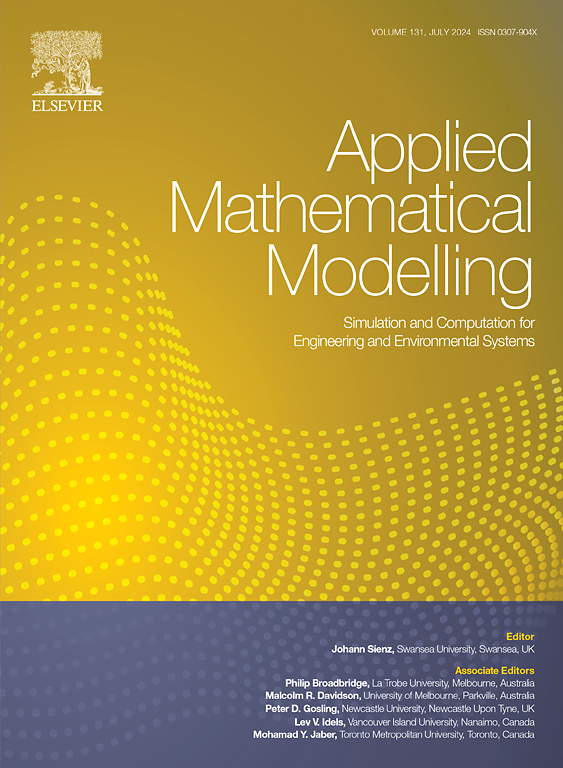移动物联网中恶意软件的时空传播建模与控制
IF 4.4
2区 工程技术
Q1 ENGINEERING, MULTIDISCIPLINARY
引用次数: 0
摘要
移动物联网(IoT)中设备的移动性使动态交互成为可能,为恶意软件的时空传播提供了便利。然而,很少有研究集中在准确建模和有效控制这种形式的恶意软件传播。为了解决这个问题,我们提出了一个将补丁恶意软件传播动态与最优补丁分配策略相结合的理论框架。首先,我们建立了一个由中心节点、补丁传播层和恶意软件传播层组成的新型时间多层网络。混合补丁过程由中心节点和补丁分发层集成实现。在恶意软件传播层,物联网设备的移动性被建模为跨多个区域的扩散过程。其次,我们设计了一个动态传播模型来捕捉恶意软件的传播演变,并分析得出入侵阈值。该阈值表明,恶意软件的传播受到补丁过程和移动物联网拓扑结构的显著影响。此外,考虑到中心主机的容量和补丁有效性,我们开发了一种优化算法来确定资源约束下的最优补丁分配策略。该算法在恶意软件缓解方面明显优于传统的基于中心性的方法。最后,我们分析了设备移动性、补丁传播层的连通性、设备分布、中心节点容量和补丁有效性对恶意软件传播的影响。本研究为预测和控制恶意软件在移动物联网中的传播提供了理论基础。本文章由计算机程序翻译,如有差异,请以英文原文为准。
Modeling and controlling spatiotemporal malware propagation in mobile Internet of Things
The mobility of devices in mobile Internet of Things (IoT) enables dynamic interactions, facilitating the spatiotemporal malware propagation. However, few studies have focused on accurately modeling and effectively controlling this form of malware propagation. To address this issue, we propose a theoretical framework that integrates patch-malware spreading dynamics with optimal patch allocation policy. First, we establish a novel temporal multilayer network comprising a central node, a patch dissemination layer, and a malware propagation layer. The hybrid patching process is implemented by the integration of the central node and the patch dissemination layer. In the malware propagation layer, the mobility of IoT devices is modeled as a diffusion process across multiple areas. Next, we design a dynamic spreading model to capture the evolution of malware propagation and analytically derive the invasion threshold. The threshold indicates that malware propagation is significantly influenced by both the patching process and the topological structure of mobile IoT. Furthermore, considering the central host's capacity and patch effectiveness, we develop an optimization algorithm to determine the optimal patch allocation policy under resource constraints. This algorithm significantly outperforms traditional centrality-based methods in malware mitigation. Finally, we analyze the impact of device mobility, the connectivity of the patch dissemination layer, the device distribution, the central node's capacity, and the patch effectiveness on malware propagation. Our study provides a theoretical foundation for predicting and controlling malware spreading in mobile IoT.
求助全文
通过发布文献求助,成功后即可免费获取论文全文。
去求助
来源期刊

Applied Mathematical Modelling
数学-工程:综合
CiteScore
9.80
自引率
8.00%
发文量
508
审稿时长
43 days
期刊介绍:
Applied Mathematical Modelling focuses on research related to the mathematical modelling of engineering and environmental processes, manufacturing, and industrial systems. A significant emerging area of research activity involves multiphysics processes, and contributions in this area are particularly encouraged.
This influential publication covers a wide spectrum of subjects including heat transfer, fluid mechanics, CFD, and transport phenomena; solid mechanics and mechanics of metals; electromagnets and MHD; reliability modelling and system optimization; finite volume, finite element, and boundary element procedures; modelling of inventory, industrial, manufacturing and logistics systems for viable decision making; civil engineering systems and structures; mineral and energy resources; relevant software engineering issues associated with CAD and CAE; and materials and metallurgical engineering.
Applied Mathematical Modelling is primarily interested in papers developing increased insights into real-world problems through novel mathematical modelling, novel applications or a combination of these. Papers employing existing numerical techniques must demonstrate sufficient novelty in the solution of practical problems. Papers on fuzzy logic in decision-making or purely financial mathematics are normally not considered. Research on fractional differential equations, bifurcation, and numerical methods needs to include practical examples. Population dynamics must solve realistic scenarios. Papers in the area of logistics and business modelling should demonstrate meaningful managerial insight. Submissions with no real-world application will not be considered.
 求助内容:
求助内容: 应助结果提醒方式:
应助结果提醒方式:


